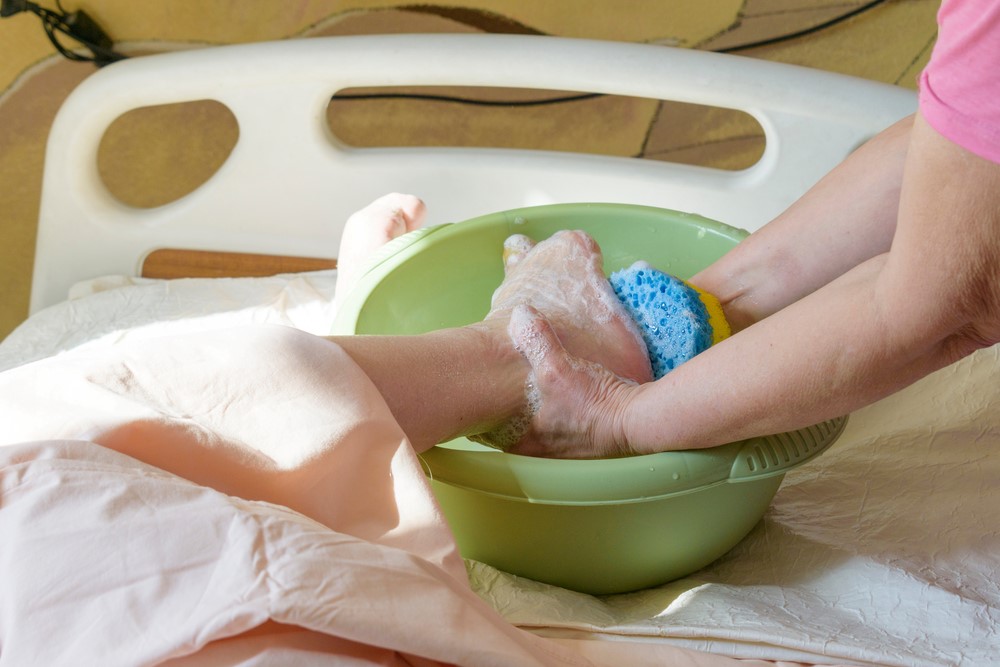
Hospice can be an important part of end-of-life, where the focus shifts away from treating health conditions and towards comfort. Doing so is powerful. After all, some forms of treatment (like chemotherapy) come with an intense physical toll. The physical costs may simply not be worth it if the treatment isn’t helping anyway.
Yet, as important as it is, hospice is also incredibly misunderstood. This is partly because conversations around death are difficult, so people put them off and don’t ask all the questions they need to.
It’s crucial to ask these challenging questions though, as you need the information to make wise decisions for yourself and your loved one. Today, we’re looking at a host of commonly asked questions about hospice, starting with what is virtual hospice? We also look at how hospice differs from palliative care, whether hospice means giving up, and what hospice care looks like in practice.
An Introduction to Hospice
First of all, the term hospice refers to a type of care – one that focuses on quality of life.
Specifically, hospice focuses on affirming life, celebrating it, and helping patients and families to work through the end-of-life transition. Hospice is incredibly important in this sense, as many people aren’t prepared for their own death or the death of a loved one.
Who is Hospice For?
Hospice is reserved for patients with a life expectancy of six months or less. These patients typically have a serious illness that treatment cannot effectively cure or control.
Hospice is most often associated with cancer patients, but it’s not limited to them. People with other conditions may be eligible for hospice as well, including kidney disease, heart disease, and ALS.
Many other conditions are relevant to hospice as well. Indeed, the focus isn’t on what condition(s) the patient has, but on how long they’re likely to live if the disease follows its normal course.
What is Virtual Hospice?
Virtual Hospice itself is a Canadian company that provides details and support on all aspects of palliative care, including caregiving, crucial decisions, communication, emotional health, and much more.
There is valuable LGBTQ information as part of Virtual Hospice as well. This is incredibly important, as many aging resources don’t address the specific challenges that this population faces.
It’s a fantastic resource for anyone caring for a family member in hospice – and is one of the most comprehensive sources of information we’ve found, particularly concerning LGBTQ seniors.
Virtual hospice is also a concept, referring to the development of better digital resources and services to help with hospice care.
Doing so is powerful too, as families who provide hospice care at home often feel overwhelmed and confused. Having better access to professional assistance and fast answers to their questions could make the experience much better.
Such tools are being developed. However, much more work is needed before they match what families and patients truly need.
Is Hospice Care In A Hospital?

Hospice care can occur in a specialized facility, like a nursing home or a hospital. However, this isn’t always the case. As we highlighted above, hospice can often occur in other environments as well, like in the senior’s home.
After all, the term hospice refers to the type of care, rather than where it is provided.
However, as we’ve discussed elsewhere, you should always think carefully about home hospice. It’s not something to jump into without consideration, as the experience can be an incredible strain for families. Home hospice can even make it harder for families to connect with their dying loved ones, as there is so much care to provide.
Hospice Care Vs. Palliative Care
Hospice care and palliative care are similar, but they’re not quite the same thing.
In particular, palliative care focuses on providing comfort and support while a patient is still receiving treatment. It can occur at any stage of treatment. Patients will often have a medical care team and a palliative care team that are separate but communicate with each other.
Hospice is specific to end of life care. It’s normally offered instead of treatment, rather than at the same time. Here, the hospice team is responsible for most of the patient’s care, while the medical care team takes a backseat.
Is Hospice Giving Up?
Looking into hospice care can feel like giving up, like you’re admitting that your loved one is going to die and are no longer holding out hope.
Because of this, many people leave hospice much later than they need to.
This is a shame, as hospice isn’t giving up at all. It’s simply a transition to the next phase and a chance to support your family member in a different way.
Is Hospice Irreversible?
One of the biggest myths about hospice is that once you’re on it, that’s it.
That’s not the case though. Patients can choose to leave hospice if it isn’t doing what they hoped or if a treatment becomes available that they want to try.
Some people even enter hospice for a while, eventually leave it, and recover.
This reinforces the idea that hospice truly isn’t giving up.
The Provisions of Hospice
What a hospice patient receives partly depends on their diagnosis and the specific agency that’s providing the services.
Hospice is also strongly patient-driven. The patient (and their family, if desired), work with the hospice staff to decide the plan of care and which services are used.
For example, some families may make use of bereavement and spiritual services to help them process the idea of losing their loved ones. Others may avoid such services and focus simply on the practical aspects of hospice care.
Does Hospice Bathe Patients?

In-home hospice teaches family members to care for the hospice patient.
This includes changing diapers, bathing the senior, cooking, and sometimes even wound care. In fact, hospice staff mostly act as advisors, rather than helping with hands-on tasks.
While hospice will cover a home health aide that can assist with some tasks, including bathing, accessing such care is sometimes difficult. Many caregivers find they’re doing most of the tasks themselves, including bathing.
Does Hospice Provide Hospital Beds?
Hospice covers the medical equipment that people need to be comfortable and supported, which often includes a hospital bed.
This type of bed can be crucial, as it is much more adjustable than a conventional bed, so it provides plenty of support.
Hospice companies often have contracts with specific suppliers. This can mean you have limited control over the exact hospital bed you receive.
Does Hospice Provide Physical Therapy?
Yes. Physical therapists are an valuable part of hospice care. Their role focuses on comfort and promoting functional ability, so the patient can move around as they need to.
What this looks like will depend on the patient’s condition and needs.
What Does Hospice Offer?
Hospice pays for many different items and services, all with the goal of helping the patient to be comfortable and cared for. Below are the main areas and what you can expect.
Medication
Medication related to the patient’s hospice diagnosis is included in hospice, so there’s no charge to the patient. Medications are often delivered from the pharmacy straight to the patient’s home.
Related medical supplies are provided as well. This can include supplies for incontinence and wound dressing tools.
There may also be an emergency kit of supplies that can be used if the patient’s health declines suddenly.
However, the funding focuses on the patient’s terminal diagnosis. If they have an unrelated condition, some medication and medical supplies for this may not be covered.
Medical Equipment
Medical equipment is provided as well, such as lifting tools, oxygen machines, wheelchairs, and walkers. The equipment provided should match the patient’s needs.
Hospice should theoretically provide all the tools needed to keep the senior safe and comfortable. However, there may sometimes be hoops to jump through, especially for pieces of equipment that are helpful, but mightn’t be strictly necessary.
Services
Hospice provides some nursing visits and visits from a hospice aide. The aide mostly helps with personal care, like bathing, while the nurse attends to physical symptoms.
How often these workers visit and the exact services they provide varies wildly.
There are also social work services that help family members to coordinate resources, plus spiritual, companionship, and bereavement support as needed.
What Doesn’t Hospice Provide?
There are a few big limitations with hospice.
The first is that coverage mostly focuses on the senior’s terminal illness, plus related conditions. While Medicare is generous with their interpretation, there may still be some tools and medications that aren’t covered – especially if they relate to a secondary condition.
Also, as mentioned before, at-home hospice assumes that family members will provide most of the care, leading to limited hands-on support.
Hospice may be provided in other contexts, like assisted living or memory care units. In those cases staff are responsible for care rather than family members. However, room and board at these facilities generally isn’t covered.
What If the Care is Too Much For You?

While hospice staff provide some support, much of the care responsibility falls on family members.
This can get overwhelming, often leaving family members stressed and tense. Plus, if you’re spending most of your energy on providing care, the quality of time with the dying patient may be severely diminished.
Hiring external caregivers can relieve the pressure.
Some hospice agencies will have this option, as the need is a common one. If not, many other companies hire out caregivers, along with independent contractors.
If hiring someone isn’t an option, you may need to turn to family and even friends. Hopefully, some people in your network can pitch in to make the experience easier.
You can also get in touch with local senior centers and any other senior-focused organizations. They may have programs that help or could put you in touch with people who volunteer their time.
Can You Leave Hospice Patients Alone?
The amount of care you need to provide will depend on the patient’s condition and their needs. But, you’re not always expected to provide 24/7 care for a hospice patient.
It’s often completely possible to leave them alone for a few hours at a time, as long as they’re safe. Some hospice patients even live on their own and just receive periodic visits from staff and family members.
Plus, if there’s only one family caregiver, providing 24/7 care may be literally impossible. You may need to buy groceries, go to doctor’s appointments of your own, or simply take a break.
However, it’s important to work this out first. Talk to hospice staff about what’s safe and what isn’t for your specific situation.
Does Hospice Tell You When Patients Will Die?
The short answer here is no.
Hospice staff can’t tell when a patient will die, as they don’t know. They may give you an estimate based on the diagnosed condition and the senior’s current health.
But this is just an estimate.
Health is complicated and often unpredictable. Some seniors will live much longer than anyone expects, while others will die sooner.
Does Hospice Care Stop After Six Months?
To be eligible for hospice, patients need a diagnosis saying they’re terminally ill and are expected to live less than six months. However, this doesn’t mean they’re automatically kicked off hospice if they live longer than this.
Instead, hospice can continue far past the six-month mark, as long as the patient’s doctor certifies that they are still terminally ill.
Does Hospice Kill Patients?
Being on hospice means that someone is no longer receiving treatment for their condition. But, this doesn’t mean that hospice kills the patient. After all, patients need a terminal diagnosis to even be on hospice in the first place.
Research even shows that, on average, patients receiving hospice care actually live longer than those focusing on aggressive disease treatment. This isn’t entirely surprising either, as treatment can be hard on the body, while hospice care is gentler and much more supportive.
Still… there are controversies here.
Some family members have had bad experiences, feeling that a loved one was poorly cared for or died too soon because of excessive pain medication.
Situations like this may happen, but they’re uncommon.
After all, hospice aims to improve patient comfort, not hasten death.
Remember too that when a person dies is very unpredictable. Some seniors will die sooner than anyone expects, regardless of whether they’re on hospice.
Talking with hospice staff regularly can help put your mind at ease. This way you understand what decisions are being made about the senior’s health and the reasons behind them.
How Long Can You Stay in Inpatient Hospice?
Inpatient hospice can theoretically last as long as hospice at home. This could even mean more than six months of care if the patients live longer than expected.
However, inpatient hospice costs Medicare much more than virtual hospice approaches, which can lead to more restrictive policies. This could even mean that some seniors end up needing to leave inpatient hospice if their health improves enough.
When is it Time to Talk About Hospice?
Some doctors push for hospice, while others don’t talk about it at all.
This means you may need to bring hospice up yourself.
The following are clues that it may be time for hospice care – or to at least start the conversation.
- The condition is no longer responding to treatment
- Responses to treatment are minimal, while the treatment is having a very negative impact on quality of life
- The patient is no longer willing to follow an aggressive course of treatment
- Their doctor has said that they have a life expectancy of six months or less
- Symptoms are getting progressively more challenging to manage
- They are losing a lot of weight or are rarely willing to eat
- They spend a lot of time sleeping and have little interest in other activities
Often, sooner is better than later for hospice conversations.
For one thing, when someone is on hospice, their access to pain management often increases, which can dramatically improve their quality of life.
Also, end of life decisions are tough enough on their own. They’re much more difficult when things are overwhelming and emotions are running hot.
Having the conversation early allows you to choose your timing better and to make the best decision as a family.
Need Support?
As a Death Doula, Angelica guides and supports families through the end-of-life experience, giving you an anchor and safe space every step of the way.

Leave a Reply